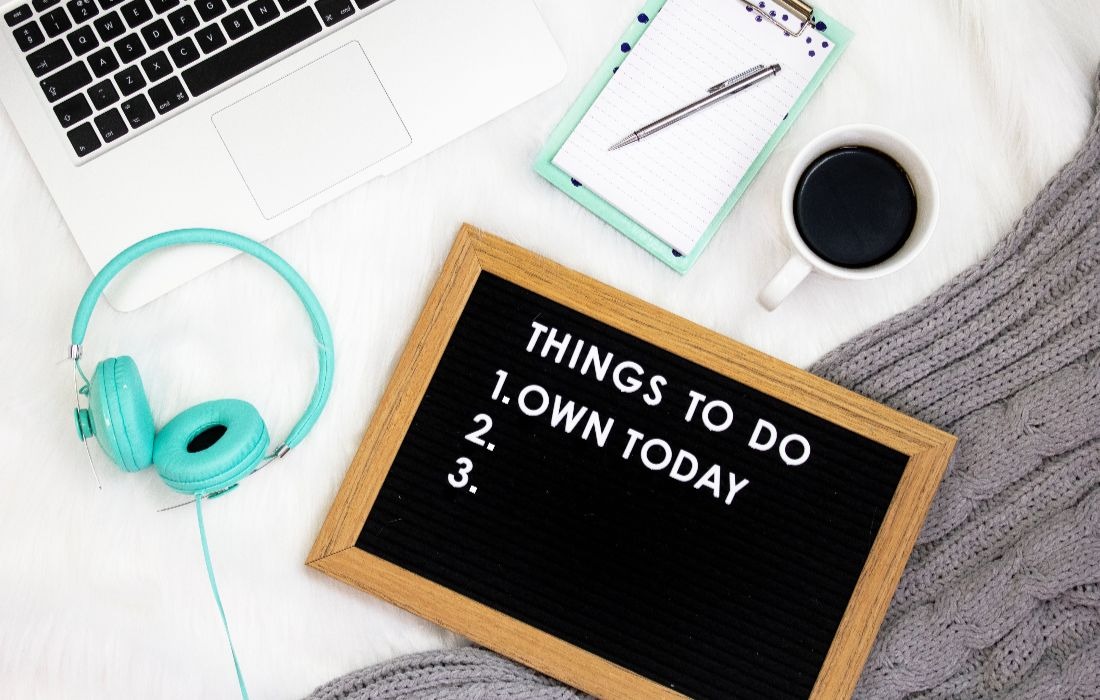Sometimes the amount of work you have to do feels never-ending.
One thing after another after another, and then it always feels like there’s more to do – and no matter how much work you do in a day, it only takes thinking about the size of your “to-do list” to evoke that sinking feeling that it’s not enough.
This article was commissioned by UCL Student Support and Wellbeing. Check it out on the official website!
How do you beat that feeling? How can you appreciate what you’re doing and avoid the temptation stretch yourself thin just to do more?
I created the “Daily Intentions” method to feel relaxed, on top of my game, and proud of what I accomplished each day. How can you use it? It starts with getting clear on everything that you’re doing.
1 · Get clear on what you’re up to
A lot of stress comes from uncertainty and from trying to remember a million things.
What are you tending to right now? Take a moment to write down everything that’s going on in your life – academically (e.g. deadlines), professionally (e.g. applications), and personally (e.g. family time).
Get clear on everything that’s going on, then you can manage it.
2 · Lay it out
When you’re clear on all the things you’ve got happening or coming up, ask yourself, “What needs to be done?”
Have you got coursework to research or write? Perhaps jobs to search or apply for? What about trips or times with friends?
Get a firm sense of “what” needs to be done and “by when”.
3 · Break it down
Have you got a clear sense of what you need to do right now? Great. Now ask yourself, “How am I going to do it?” Create a “roadmap” to getting them done.
You’ve essentially created tasks; now you need to create sub-tasks. Why is this important? Because without sub-tasks, you’re working from a binary of “done-or-not-done”. With small things like sending emails, that’s fine. With things like 2,000 word essays, you’re going to spend a lot of time being “not done” – and that is draining.
Consider how you can break things down. For an essay, you could break it down into phases of researching, structuring, writing, and editing. I’ve even put down writing each paragraph as a milestone when I’m REALLY trudging through.
4 · Set out your “Daily Intentions”
You’ve already done all the work – now you just need to piece it together when you ask yourself, “What am I going to do today/tomorrow?”
Give yourself a specific set of things to do in a day, and hit those targets. Be realistic, and follow the roadmaps you’ve created. Why is this important? Because if you aim to do too much, then you risk that feeling of defeat and overwhelm.
Plan out what you’ll work on, order it, and be realistic. If you’re going to lectures or spending time with friends, include that too
5 · Cross things off, colour things in!
How do you feel that golden sense of accomplishment? Mark what you’ve completed.
When I do my Daily Intentions, I use a mind-map, and I colour every task I’ve completed purple. At the end of the day, seeing a page full of purple gives me a sense of pride. For you, it could be colour, it could be crossing out, it could be ticking off.
Set out to achieve your daily intentions, mark them down as complete, and feel pride in doing exactly what you set out to do – and if some things are left unfinished, reflect on how come, and adjust your strategy for the next day.
Get started on your own Daily Intentions
Grab that piece of scrap paper; open a new page of a bullet journal; start a fresh mind-map. In whichever way for you, you’re just a step away from cutting that stress and taking back control. It all starts with getting clear.








Leave A Comment
You must be logged in to post a comment.